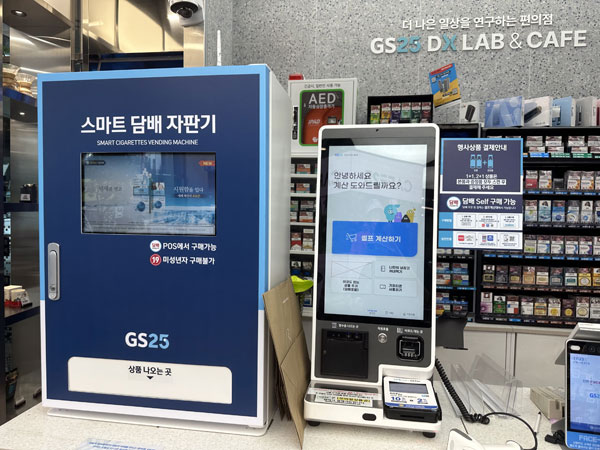Kiosks facilitate discrimination against the elderly and the disabled

[The image includes my personal encounter with a kiosk, a photo taken by Kenna Choi]
According to the "2020 Survey on the Status of the Elderly" conducted by the Korean Ministry of Health and Welfare, 64.2% of the 10,097 elderly people aged 65 or older reported that they felt uncomfortable ordering on kiosks.
Kiosks became popular during the covid pandemic and have now become a norm in South Korea.
It is a small digital display that customers can use to order from instead of ordering directly from an employee.
According to the Science, ICT, and Communication Commission, the number of kiosks in the private sector more than tripled from 8,587 to 26,574 from 2019 to 2021.
Kiosks are popular among shop owners as the increasing minimum wage imposed a great financial burden.
Kiosks are also more efficient than human labor as they can collect orders in a structured manner and send them directly to the employees, reducing the risk of miscommunication.
Customers often also prefer kiosks as they can easily customize drinks and avoid face-to-face communication.
Although there are clear benefits of the implementation of kiosks in restaurants and other facilities, they have also attracted attention for being responsible for creating discrimination against the elderly and the disabled.
There have been reports of people with various conditions that have been unable to use kiosks.
According to a study the average maximum height a person in a wheelchair can is122cm; 85% of kiosks currently installed were clearly above this limit.
Kiosks also discriminate against the visually impaired as there isn't any assistance that another human can provide.
This not only challenges the disabled individuals but sends out a message to them that they are unvalued and dehumanized to the point that they need to go through a struggle to obtain the most basic food necessities.
The elderly have also reported struggling with using kiosks. Most of the modern generation was born into a digitalized world.
Hence, there wasn't a period of adaptation or struggle in utilizing these devices.
However, the elderly population was not born into this world where most services are digital and have remained in the traditional ways that are comfortable for them.
Thus, when they were met with new digital devices such as kiosks, 64.2% reported discomfort.
What contributed to this discomfort is the lack of instruction.
For example, 12 out of 20 kiosks did not have any tutorials or directions. A famous Korean youtuber in her 80s quoted “ I can't buy even if I have money. I don't know how to use it [the kiosk].”
Thus, the digitalization and lack of support for educating the elderly population about digital technology is promoting inequality.
In addition to the digital aspect, elders have reported difficulty comprehending what is written on the screen.
For example, 14 out of 20 kiosks had fonts smaller than 12mm, the authorized minimum.
There were also cases where kiosks were designed to substitute Korean words for English translations.
These factors have also contributed to the elderly experiencing discrimination and alienation in a society that they have been a member of for decades.
Kiosks undoubtedly offer great benefits in efficiency and convenience in modern society.
It has also been one of the key contributors in the digitalization of today’s modern society.
However, it is important that we acknowledge those who are unfamiliar with new digital developments and educate them or make changes to the current technology that we have so that our society can embrace digitalization as a whole.

- Kenna Choi / Grade 11
- Chadwick International

![THE HERALD STUDENT REPORTERS [US]](/assets/images/logo_student_us.png)
![THE HERALD STUDENT REPORTERS [Canada]](/assets/images/logo_student_ca.png)
